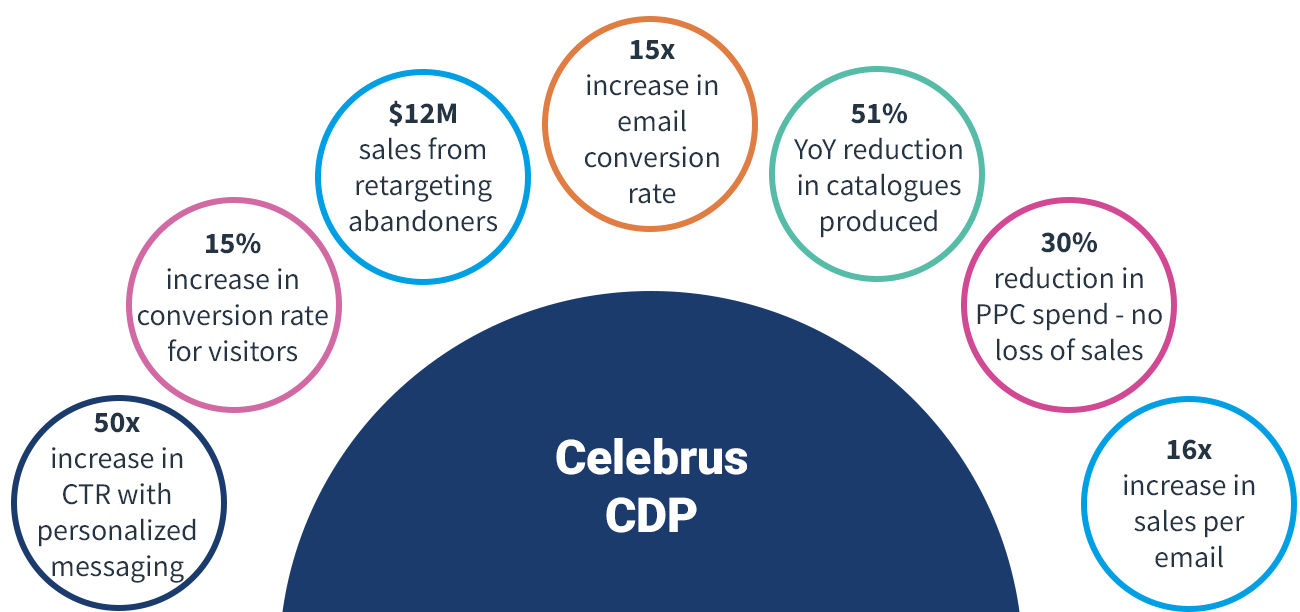Make 2023 the Year of the 'Real' CDP!
I read yet another 2023 trends article the other day, which in fairness took a different approach than the typical ones and was quite well written. But what really caught my attention was the section on CDPs, specifically that “The pressure will be on CDPs to prove value”. I couldn’t agree more! The author questions whether they’re the savior for data-driven marketing, especially as it relates to transforming email campaigns and elevating customer messaging.
The truth is, CDPs have disappointed a lot of people – marketers in particular – with overstated promises of being the magic bullet to fill the gap between data lakes and CRMs, providing the single source of truth and intelligent insights that enable laser-sharp targeting and personalization. Unfortunately, most CDPs can’t deliver on those promises, resulting in failed implementations and out-of-work marketing and data professionals. Why, you ask?
Because they can’t provide the data needed – for three reasons:
- The CDP doesn’t actually capture the data themselves
Many CDPs are what we call campaign or delivery CDPs; you bring them the data (from whatever sources your company uses) and they compile it and spit it back out. Most began their life as tag management or analytics platforms and repurposed themselves as a CDP. Which means they collect and assemble the data, but they don’t capture it. This also means what they’re collecting is a batch of biased data that someone decided could be important.
- They do capture data, but not in a compliant first-party manner
CDPs who do collect data typically gather it from third-party vendors, or a tag-based system that uses fake first-party cookies to capture it. In both cases, regulations such as GDPR and Apple ITP block the collection of a large proportion of the data, crippling the ability to generate meaningful insights to enhance marketing campaigns.
- They don’t capture the data in real-time
When a CDP relies on external data, third-party cookies, or a predetermined tag-based data capture method, there’s a delay from when the data is captured, until when it can be used. This means by the time it’s activated, it’s already outdated. If I’m “in the zone”, looking for the perfect decoration for my holiday dress, I’m searching and browsing multiple sites and options. Getting an email offer with a coupon for home décor three days later might be good – or the party may be over because I procrastinated and needed it right away. Getting an email WHILE I’m searching for the perfect décor, or better yet an in-session message with a coupon would be even better. You can bet that will instantly affect my decision to purchase or not.
As a marketer, why be good when you can be great?
The right CDP provides immense value to marketers – on every digital channel from email to paid ads. It does this by capturing true first-party data, in real-time, with full compliance – and notably by capturing ALL the data. This means that instead of feeding the typical presumptive data points into your marketing engine, you get true insight that you may otherwise have missed. Because when you’re only looking for one thing, that’s all you’ll find. As the author said, “…the money companies spend on installing [CDPs] is wasted with the data, technical structure, or know-how to manage them.” The data is key.
The other issue with misleading/imposter CDPs is they can’t reconcile identity across domain, device, session, and time to deliver a true single view of the customer. To my horror, a related article states that to use a CDP for email, you have to maintain every individual email as a separate record, creating multiple records per customer, and that’s ok. I’m here to tell you, it’s not!!
A true CDP will persist identity indefinitely, stitching together both known and anonymous visitors over time to create a robust ID graph that empowers game-changing targeting and real-time personalization.
What does this look like?
At Celebrus, we routinely see exceptional results from implementing a true CDP solution. Here are some real-life examples:


